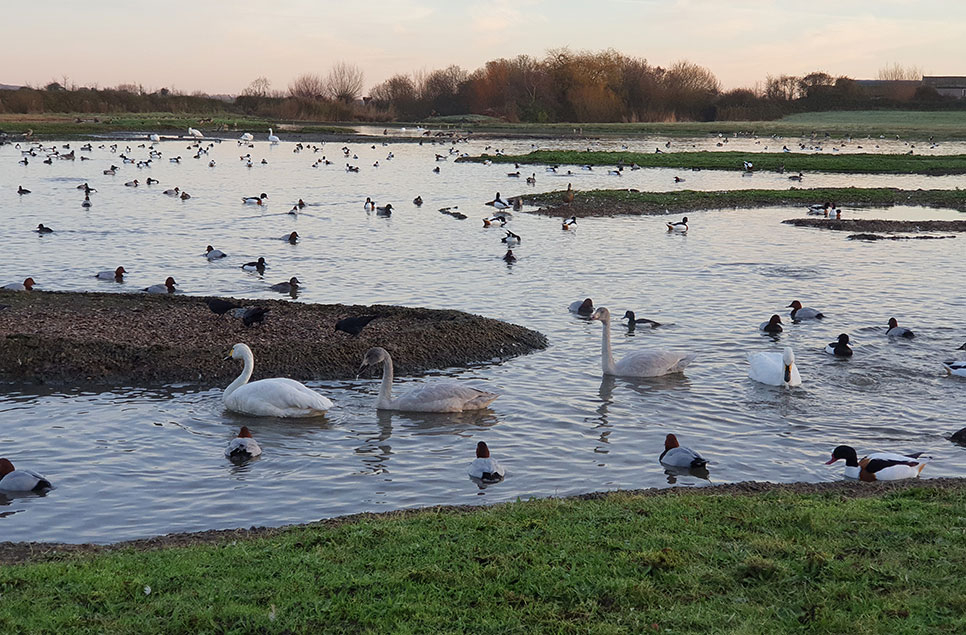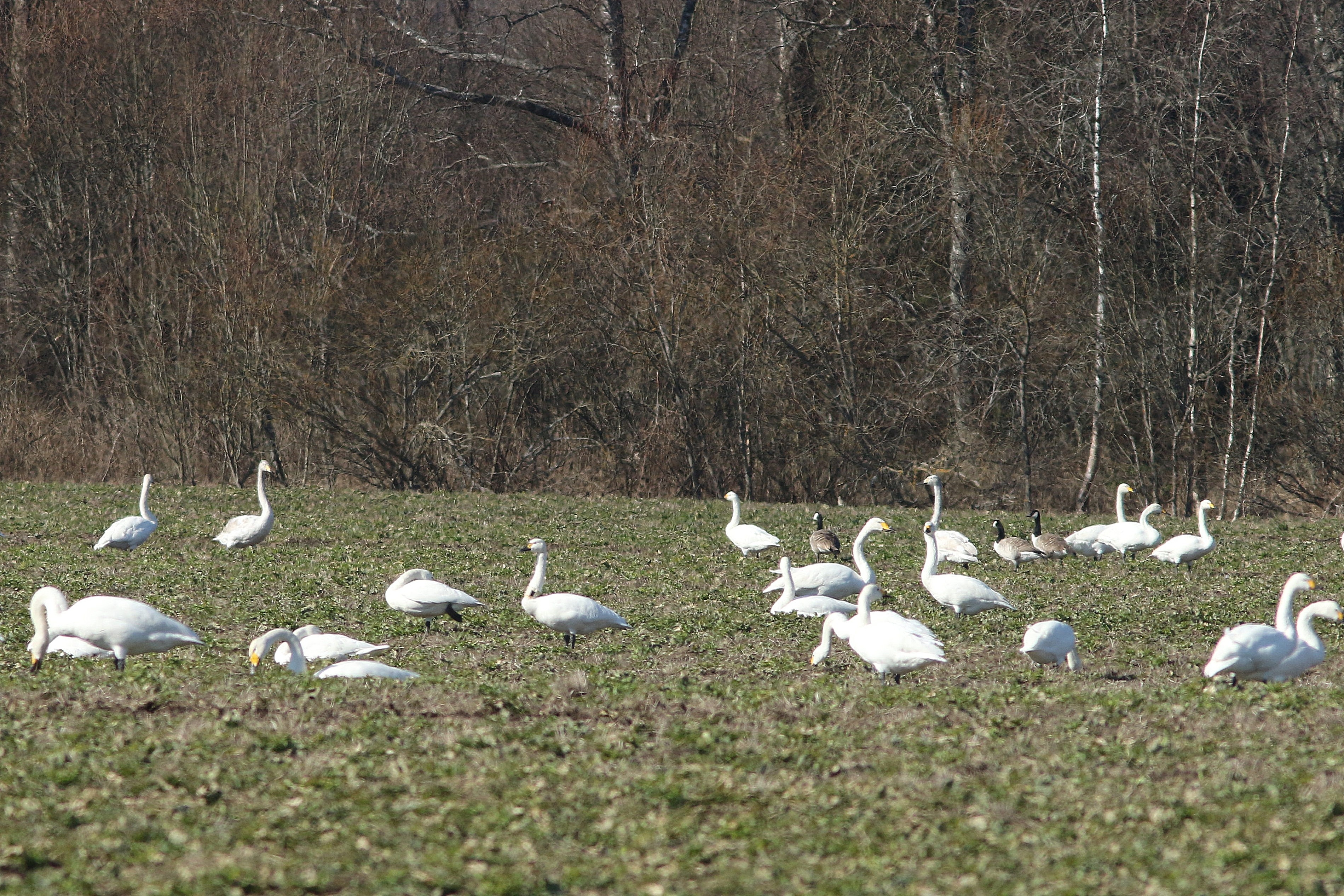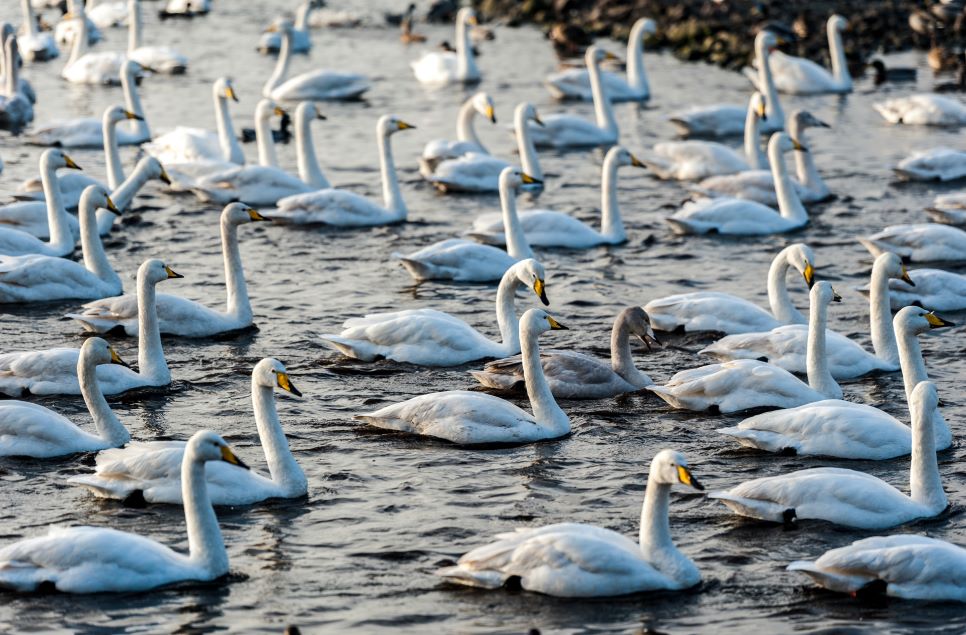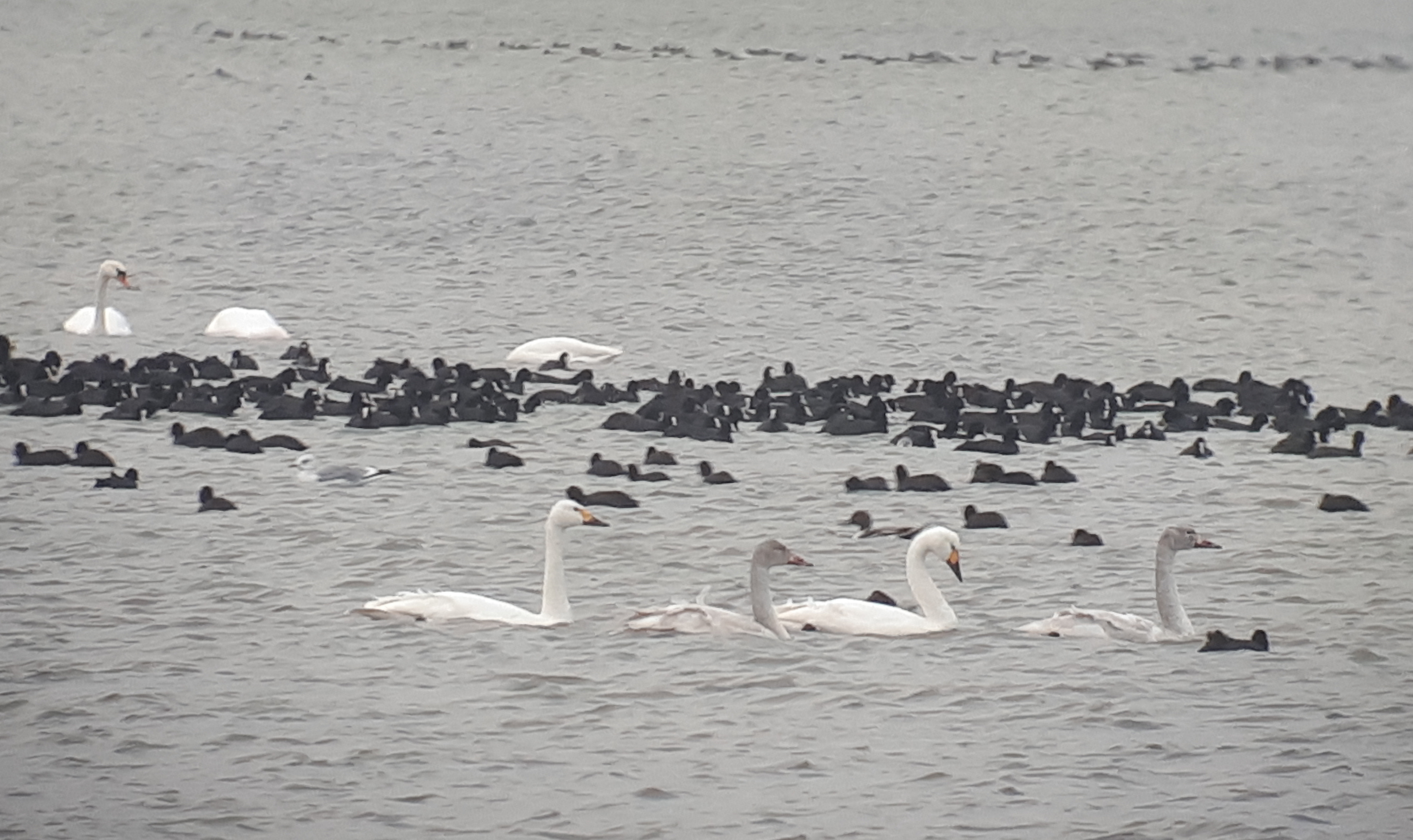Travelling 'swan exhibition' diaries
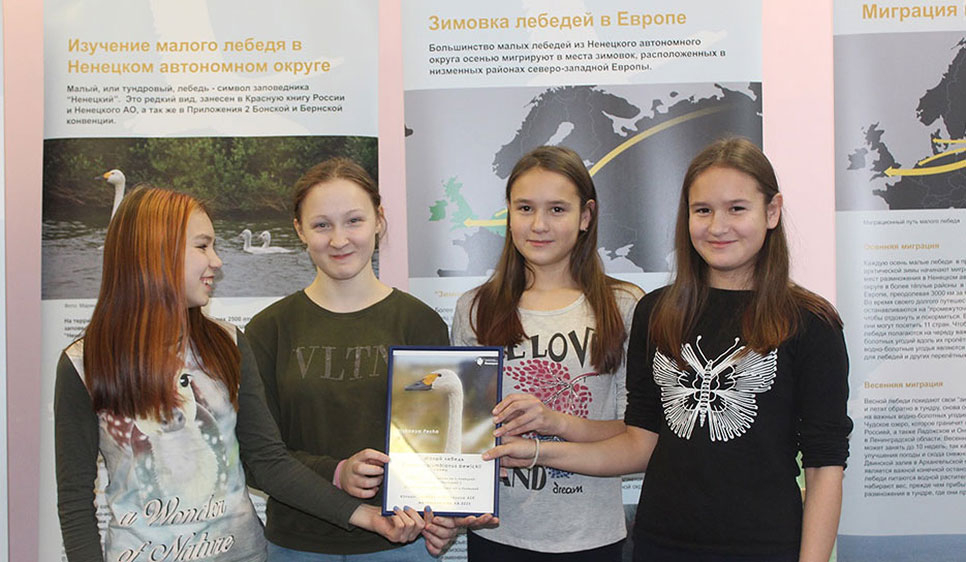
One of the challenges facing WWT as it works to save and protect Bewick’s swans from illegal hunting across the flyway, is how to change people’s behaviour so it’s no longer socially acceptable to hunt the birds.
Our Swan Champions Project is a grassroots network of passionate individuals including scientists, hunters, indigenous leaders, local businesses, teachers and young people that aims to do just that. Drawn from across the Russian arctic, we believe they’re the best people to persuade their local communities, friends and families to stop hunting Bewick’s on their breeding grounds.
Marina Samoilova is one of our Russian swan champions and works for the Federal Nature Reserve (Nenetskiy Zapovednik). This spring she took a Travelling Swan Exhibition to four schools across the remote Nenets Autonomous Okrug – one of the key areas where Bewick’s breed. The exhibition reached nearly 700 people and included numerous educational outreach activities with local schools. In addition each community visited is having a ringed swan named after it.
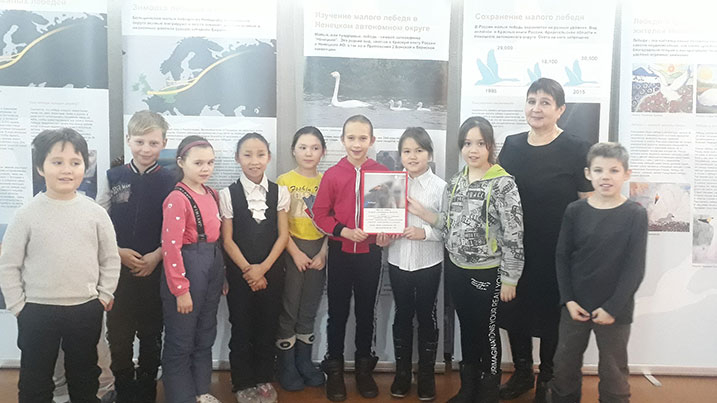
Here is her diary, translated from Russian to English, of her ‘Nature Reserve Marathon’ and how she managed to change the hearts and minds of young people across the region, encouraging them to become the conservationists of the future.
For two weeks we roamed the remote, hospitable villages of Nes’, Oma, Nizhnyaya Pesha and Indiga with a wide-ranging eco-educational programme. During the journey, our team covered more than 1,200 km of snowy wastes without roads, held 40 nature talks and 15 educational masterclasses.
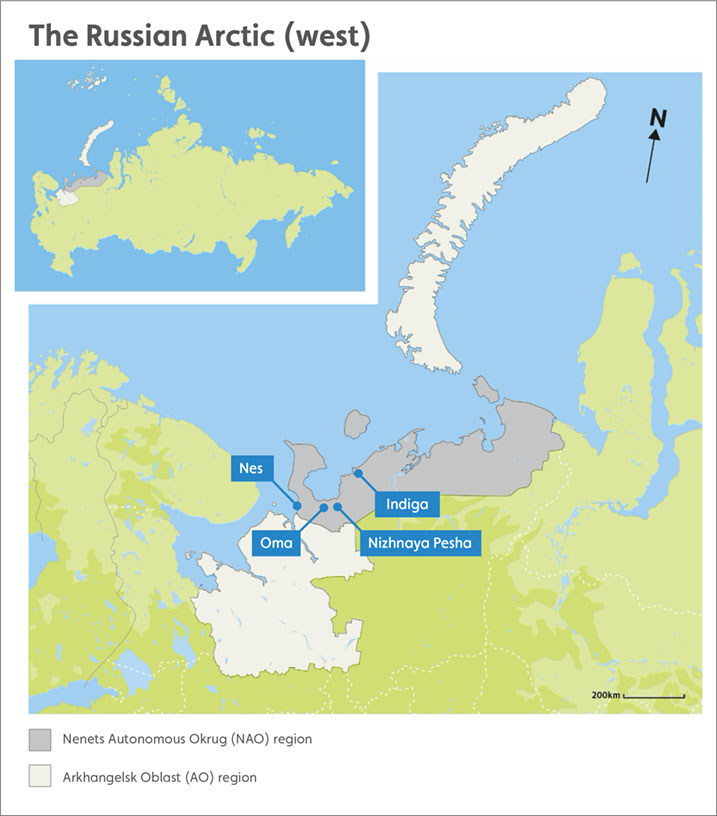
Diary entry one: Nes’ village
Our first stop was the village of Nes’, a self-sufficient village on the shores of the White Sea. Getting there was not easy. Strong winds, a snowstorm and a road badly damaged by 4x4s, gave us no time to get bored. However, because we had experienced state inspectors on hand, as part of the team, we reached our destination on time. The local residents greeted us like family, kindly supplying accommodation, food, a bath, a hall for the displays and lots of inquisitive children. It turns out they don’t meet people from outside of their community very often, so every day as we walked to work at the local cultural centre, we felt the attention as if we were celebrities.
During the talks to the children about the reserve, it became clear they know little about the officially protected reserves, but in terms of knowledge of local nature, they are unrivalled. This isn’t surprising, as most of these children spend the whole summer on the tundra and know its inhabitants first-hand, not by hearsay. As a result, we learned much that was new and interesting.
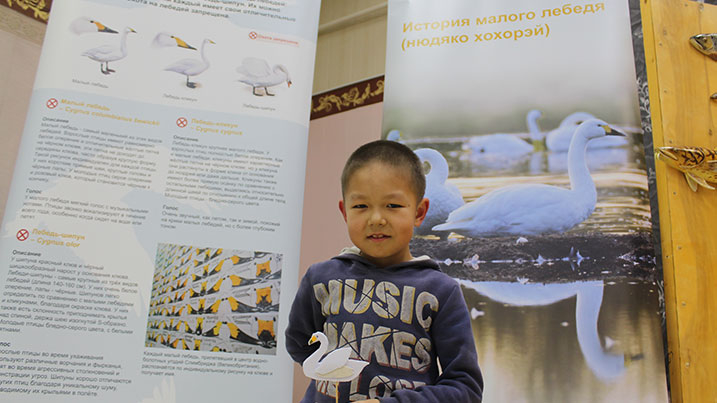
During our three days at Nes’, we attended a poetry competition, judged items dedicated to the local culture, took part in rehearsals of song and dance and made friends with a remarkable little boy called Serezha who amused us with cheerful anecdotes. Overall, the trip was very productive for us all. We would like to thank the “Nes’ House of Local Culture”, the Nes’ middle school, the Nenets Museum of Local Culture and the many relatives of our state inspector Nikolaj Vanyut, for the opportunity of staying and working with you.
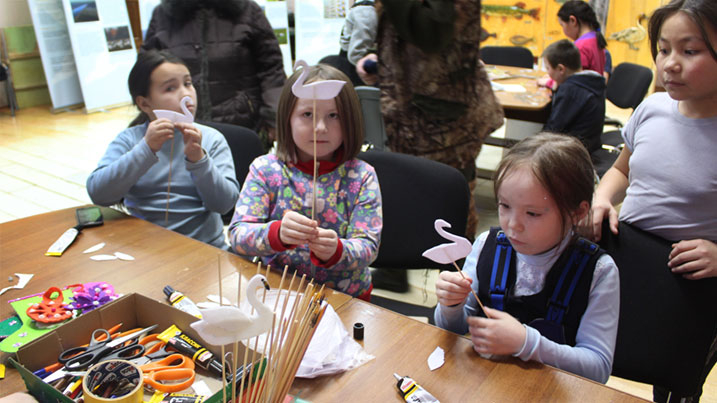
Diary entry two: Oma village
With our productive work in Nes’ finished, our friendly company moved on to the next village of Oma. Getting there wasn’t particularly difficult which was surprising after all the previous jolting on unmade roads. To pass the time, we began to count the partridges flying by. By about 30 partridges, most of the team had fallen asleep.
We arrived at night. The village of Oma is an exceptionally beautiful old village, which made a powerful impression on us. The first thing that you notice is the width and tidy state of the streets. The most important feature, as with everywhere in the North, is the hospitality of the people. Over a cup of tea we were able to try all of Auntie Sima’s types of jam. Amazingly, this dear lady has not only made an extremely beautiful and productive garden (judging by the photos), but has singlehandedly covered corridors around her house with plastic bottle tops. Now in our office we collect not only used paper, batteries and plastic for recycling, but also bottle tops for Auntie Sima.
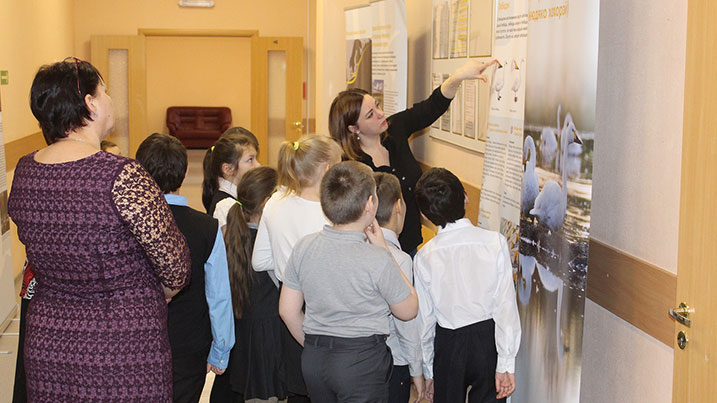
In Oma we worked in the school. We quickly transformed the empty corridors with our swan and natural history displays and exhibits, which attracted the children’s attention. During our excursions, we were struck by the discipline of the children. Absolutely all of them, from the youngest to the oldest, listened quietly to the talks and asked questions on things that interested them. Break times turned into sit-down sessions. The children came to us and told stories of their lives, shared their observations and questioned us about our work on the reserve. As a result, we quickly organised a careers guidance lesson for future students. We would like to express our respect to the director and all the teachers of Oma Middle School for the exceptional interest shown by their pupils and to wish them success for the future.
Working in Oma was a pleasure and leaving was rather sad.
Diary entry three: Nizhnyaya Pesha village
Nizhnyaya Pesha is a pleasant old village on the banks of the river with the same name. We were here at the weekend and also for Valentine’s Day. Everyone was preparing for the event in their own way and we quickly realised we wouldn’t be able to do any productive work during the holiday. So we prepared the exhibits and set out for a walk.
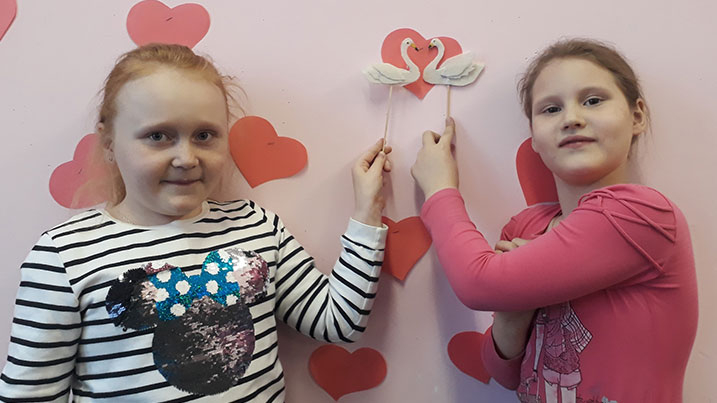
After viewing all the sights of the village, we decided to have a look at the airport. We found the way and set off along a forest track. Halfway along, we came across an extremely large animal footprint. “It is just a big dog” we thought and were about to go further when we saw a piece of some kind of fur. We silently agreed that there was absolutely no need to see the airport and turned back. By the abandoned building of the cultural centre we met some local boys; when we asked them what there was to do, they suggested entering the ruins of the cultural centre. We could not refuse such a tempting offer so, gathering our courage, we waved through the broken window. Later we were able to tell these same boys how to live a healthy ecological way of life and conserve the environment.
On Sunday morning, our host Aleksandr over a cup of tea decided to find us something to do. “Girls, why are you sitting there idle, you could pluck a partridge!” Our surprised faces gave their own reply. We had planned to spend the weekend in a cultural context with local people or meeting hunters and fishermen, not sitting in a heap of feathers. Our clever host knew that we would be of little use at this activity. The children of Pesha proved very inquisitive. They were happy to come to us to make a small swans from felt and to chat. The schoolteachers were especially interested in our work. They even invited us to run a scientific expedition in the autumn for the older pupils. That seemed to us to be an excellent idea and gave us something to think about on the way to Indiga our final destination. No matter how hard the people of Pesha tried to persuade us to stay another couple of days, we were adamant to press on.
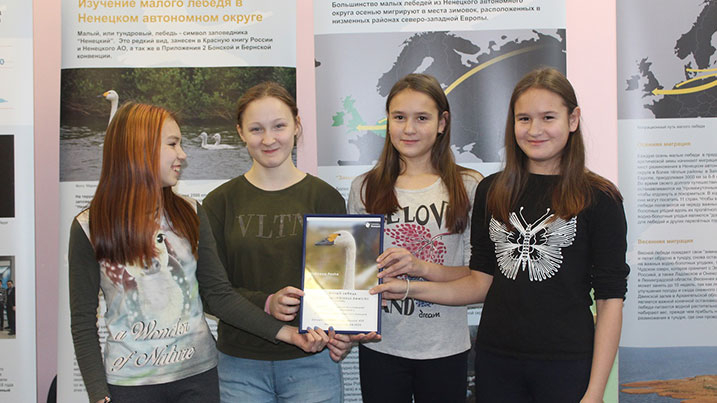
Diary entry four: Indiga village
Despite the snowstorm, which had been raging for the previous two days, we jumped into the vehicle and set out for Indiga. Everyone was sure that this huge vehicle would overcome any obstacle on its route. No one suspected what surprises Mother Nature had in store for us.
About halfway there, while our state inspectors were searching the tundra with flashlights for signs of the road, we remembered that well-known expression: “We don’t have roads, only directions”. Very true words, but for some reason no-one paid them any attention then. However, we were travelling slowly but surely along the shores of the Barents Sea. At 60 km from our destination, we got stuck “up to our ears” in water. Our huge 4x4 simply got stuck in a rut. There was nothing for it – we had to dig. Two shovelfuls of wet snow and you are wet through. No matter how much we tried to help, we could only move the vehicle by a couple of centimetres. Towards morning, we had finally managed to push the 4x4 out and we continued with our journey.
As we approached Indiga, we caught sight of a smart new school. According to our governor, it was to become the model school for the region. We were not able to work there, unfortunately, as it’s only due to open in April this year. But we were welcomed with open arms at the cultural centre. They allocated us accommodation with a smart sofa and every comfort. Every day we enjoyed a voice, which reached us from the stage – a young man was rehearsing a concert to mark International Women’s Day on the 8 March. It turned out that he had come to the village to build that very school, had met a young woman and decided to stay permanently. You couldn’t help but fall in love with Indiga. A place forgotten by God, located on the shore of the Barents Sea with tremendous views of the river. Only here can you cross a wooden suspension bridge and take part in the famous Festival of Smelt. On the Indiga River, dwellings of ancient man have been found and local people are always finding archaeological objects.
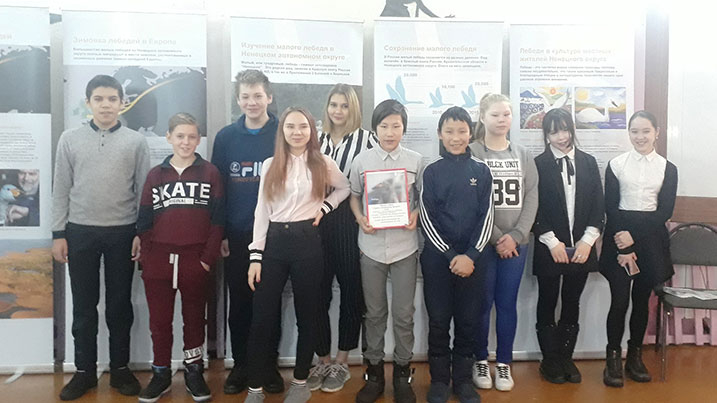
Throughout our travels with the exhibitions to the remote villages of the NAO, this trip left a deep impression in our hearts. We would like to express huge thanks to everyone who was involved with our expedition.
These diaries were written by Marina Samoilov and edited by Yulia Bogomolova from the Nenetskiy Zapovednik.
The travelling exhibition was called the 'History of the Bewick's Swan' and aimed to raise awareness about the species and its wetland home. It was created by the Nenetskiy Zapovednik, the Nenets Museum of Local Lore and WWT. It visited four settlements in the Nenets Autonomous Okrug (NOA) region between 8 and 22 February 2020.
The Swan Champions of the Russian Arctic
A community of passionate individuals who are engaging scientists, hunters and young people in initiatives to protect endangered birds from illegal hunting.
Find out more